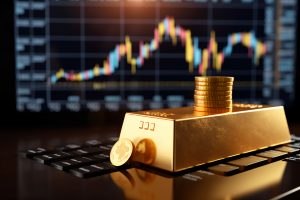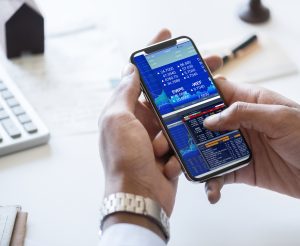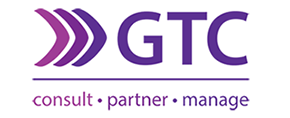Non-yielding assets can still be attractive
 David Seligman
David Seligman
Fund Manager
_______________________________________________________________________________________________________
The allure of non-yielding assets: A look into alternative investments
In the pursuit of financial growth, investors often favour traditional assets such as shares and bonds, drawn by their potential for regular income and anticipated long-term capital appreciation. Recent events in our volatile world however have shone a light on what can be termed ‘non-yielding assets’. This diverse category encompasses tangible stores of wealth such as gold, antiques, art, and fine wine, as well as intangible innovations such as cryptocurrencies.
While these assets don’t generate the income streams that dividends and interest do, they hold a unique appeal, promising potential returns driven by appreciation, scarcity, and sometimes even passion. The allure of these sometimes emotional purchases is accompanied by its own set of pitfalls, demanding careful consideration before venturing into this alternative investment landscape.
 The glitter of gold: A timeless hedge
The glitter of gold: A timeless hedge
Gold has served as a store of value for millennia, acting as a hedge against inflation and economic uncertainty. Its enduring appeal stems from its scarcity, durability, and perceived intrinsic value. During times of economic and political turmoil, investors still revert to gold. Increased demand at these times drives up its price.
While gold doesn’t generate any income, its price appreciation can be substantial. During periods of high inflation, gold has historically, and traditionally performed well. However, it’s crucial to remember that gold prices are volatile and influenced by numerous macro factors such as global economic conditions, interest rates, and investor sentiment. It is true that over the very long term, gold has kept pace with inflation, but it’s not a guarantee of immediate high returns.
 The digital gold rush: Cryptocurrencies
The digital gold rush: Cryptocurrencies
Cryptocurrencies, like Bitcoin and Ethereum have emerged as a new class of non-yielding assets in recent years, captivating investors with their potential for disruptive innovation and high returns. The underlying blockchain technology behind cryptocurrencies promises decentralised and secure transactions, attracting investors seeking alternatives to traditional financial systems. The meteoric rise of 16-year-old Bitcoin created a perception of immense profit potential, fuelling a speculative frenzy. However, the cryptocurrency market is notoriously volatile, with prices prone to dramatic swings. Regulatory uncertainty, security concerns, and the inherent complexity of the technology add further layers of risk. While some cryptocurrencies have delivered impressive returns, many others have crashed, highlighting the highly speculative nature of this asset class.
Is scarcity driving the returns of gold and cryptocurrencies?
Both gold and crypto have supply constraints. Gold, for example, has a finite total supply that exists on earth. It is estimated that 240 000 tonnes have already been mined and that only 50 000 tonnes remain in the ground. Further, the costs and operational complexities associated with gold mining mean that the process of extracting the gold remaining under the earth’s surface is slow and progressive, resulting in a relatively stable supply into the global market each year.
 Bitcoin, though intangible is subject to similar limitations, only in a digital format. Bitcoin’s maximum supply of 21 million tokens was hardcoded into its protocol at inception in January 2009 and is protected from manipulation by the laws of proof-of-work (PoW) consensus. As with gold, the process of accessing untapped reserves of Bitcoin is a financially intensive process, requiring significant capital investment and subject to the principle of halving which reduces Bitcoin’s annual issuance rate by 50% approximately every four years. Together, the confluence of a finite total supply with the technical and financial restraints, results in a fairly predictable and lessening supply for both gold and Bitcoin, thereby supporting their scarcity and intrinsic value.
Bitcoin, though intangible is subject to similar limitations, only in a digital format. Bitcoin’s maximum supply of 21 million tokens was hardcoded into its protocol at inception in January 2009 and is protected from manipulation by the laws of proof-of-work (PoW) consensus. As with gold, the process of accessing untapped reserves of Bitcoin is a financially intensive process, requiring significant capital investment and subject to the principle of halving which reduces Bitcoin’s annual issuance rate by 50% approximately every four years. Together, the confluence of a finite total supply with the technical and financial restraints, results in a fairly predictable and lessening supply for both gold and Bitcoin, thereby supporting their scarcity and intrinsic value.
Tangible treasures: Antiques, cars, fine wine, and art-related collectables
 Beyond gold and crypto, the world of tangible assets offers other non-yielding investment opportunities. Antiques, art, wine, and various collectables can appreciate in value over time, driven by factors including historical significance, artistic merit, scarcity, and changing popular tastes. These assets can also provide aesthetic enjoyment and serve as a passion investment. These markets are often illiquid, making it challenging to buy or sell quickly.
Beyond gold and crypto, the world of tangible assets offers other non-yielding investment opportunities. Antiques, art, wine, and various collectables can appreciate in value over time, driven by factors including historical significance, artistic merit, scarcity, and changing popular tastes. These assets can also provide aesthetic enjoyment and serve as a passion investment. These markets are often illiquid, making it challenging to buy or sell quickly.
Valuation can be subjective, often requiring expert knowledge, while storage, insurance, and maintenance costs need to be considered when calculating potential returns. Fine wines for example require specialised storage conditions. Art may need restoration and conservation work, as well as security. We all know the amount of work that is associated with owning even one car…
Historical returns and statistical insights
Recognising that past performance never guarantees future results, it is still true that examining historical returns can offer valuable insights. Gold has historically provided a hedge against inflation, but its returns can be modest compared to stocks over the long term. Cryptocurrencies, being a relatively new asset class, have limited historical data, but have performed handsomely over the past 10 years. While some crypto’s have seen spectacular gains, the volatility and risk are undeniable. The art and antiques market has produced some impressive returns for certain pieces, but it’s highly selective, and most art doesn’t appreciate significantly. Fine wine, similarly, can offer good returns for specific vintages but requires expertise and proper storage. The US based Hagerty Blue Chip Car Index, compares the performance of classic cars against the S&P500, showing that stocks only outperformed cars in 2024 after a 17-year period.
The pitfalls of non-yielding investments
Gold, classic cars, and certain cryptocurrencies have performed incredibly well in the past but investing in non-yielding assets comes with several inherent risks:
Volatility: Prices can fluctuate dramatically, and when this is downward, losses can be substantial. While this is true for emotionally based markets such as art and collectables, it is particularly true for cryptocurrencies and commodities like gold.
Illiquidity: Selling these assets quickly can be challenging, especially for tangible items like antiques, art, and fine wine.
Storage and maintenance: Tangible assets require specialised storage, insurance, and maintenance, adding to the overall cost of ownership.
Valuation difficulties: Determining the fair value of these assets can be subjective and requires expert knowledge. Emotionally based markets increase the risk of overpaying or underselling.
Lack of regulation: Most of the non-yielding asset markets noted above lack robust regulation, making them susceptible to fraud and manipulation.
Balancing the approach to alternative assets
 Non-yielding assets can offer diversification benefits and the potential for high(er) returns. While there can be no debate that an open-top sports car or a fine whisky collection is a lot more exciting than a bunch of unit trusts, alternative assets are not without significant risks and should not be considered core investments but rather enhancements – in small portions – to a well-diversified portfolio.
Non-yielding assets can offer diversification benefits and the potential for high(er) returns. While there can be no debate that an open-top sports car or a fine whisky collection is a lot more exciting than a bunch of unit trusts, alternative assets are not without significant risks and should not be considered core investments but rather enhancements – in small portions – to a well-diversified portfolio.
Investors attracted to non-yielding assets should first be sufficiently wealthy – based on conventional investment classes – to consider these alternatives.
Careful research on any non-yielding asset before investing is required. Investors should understand the specific risks involved and be prepared for volatility and illiquidity.
It’s crucial to remember that past performance is no guarantee of future returns and that these assets are often driven by speculation and sentiment, rather than any fundamental value.
When considering tangible assets, it’s wise to consult with experts in the relevant fields and in fact to be knowledgeable oneself. Ultimately, a balanced approach combining traditional assets with carefully selected alternative investments will probably be the most prudent path to long-term financial success.





